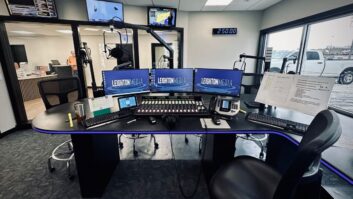Fix it in a Pinch with On-hand Parts
Jan 6, 2013 10:00 AM, By Doug Irwin, CPBE AMD
It’s easy to find yourself in a pinch sometimes — you need a part, or some device, and there just aren’t any resources at hand (at least not immediately). Here are some ideas for using on-hand parts in some fashion other than what they were originally intended for.
The transformer trick
In this instance, all you have is a voltage send that corresponds to a status output, but what you really need are two pulses — one that happens when the voltage first comes on, and one that happens when the voltage goes off. See Figure 1. The basic idea is this: When you run a dc current through a transformer winding, two things happen. The first is that you generate an impulse voltage in the secondary winding when the current starts (magnetic field created). The second is that you generate another impulse in that same winding when the current ends — but opposite in polarity (magnetic field collapsing).

Figure 1. Click to enlarge.
The pinch solution: Now in this pinch, you’re going to also need two opto-isolators. Those are pretty common. (Steal two of out of some other equipment if your pinch is really urgent). Tie the inputs of both devices to the secondary of the transformer, but wire them in opposite polarity. One open collector will then activate when current starts to flow in primary, and the other will activate when the current stops. This will take a little bit of experimentation, by the way; limit the current flow through the primary with a resistor, getting just enough of an impulse to activate the optos. This could be one of those rare instances that you fire up the good old oscilloscope to see the generated impulses.
The diode trick
How many times have you needed a wall-lump dc power supply only to find some around that are too high in their output voltage? Clearly too high is better than too low but you can’t just connect one that is too high to your device, because almost any device will have a voltage regulator supplying power to the circuit board, and those devices are only designed to dissipate so much power. If you run too high of a voltage in, the on-board regulator might immediately pop or it might burn up trying to regulate too high of an input voltage (from the wrong power lump) down to its working voltage.

Figure 2. Click to enlarge.
The pinch solution: The voltage from the lump you found is too high. What do you do? Well, your friend the diode can come in very handy here. See Figure 2. Now recall that each diode, when conducting, typically has a forward voltage drop of around 0.7Vdc. When you put them in series you of course multiply the number of diodes you found (let’s say five) by 0.7Vdc for your total voltage drop. (When you solder five diodes together it qualifies as a kludge, but hey, this is a pinch, right?) When first implementing this trick, though, you’ll need to quickly measure the current flow through the system, and then shut the device off. Do a quick calculation on the power dissipation. If you had 200mA of current flowing, then the power dissipated is 140mW per diode. Do a quick online check (hopefully your Internet access isn’t what your trying to make work) and see if that falls inside the acceptable range for that particular diode. 1N400x type diodes can typically do at least 1W.
The extra op-amp trick
This one is just common sense but sometimes when in a pinch (in the middle of the night at some transmitter site) perhaps you wouldn’t think of it. I had a microwave receiver die on me one time — of course at that transmitter site (in the middle of nowhere) I had no spares. Or did I?
The pinch solution: A quick consultation with the manual showed that the mux output and the composite output used the same IC. The station wasn’t using the mux, so I opened the receiver, yanked that IC out of the mux circuit, and stuck it in the composite output circuit. Problem solved, parts ordered for the next visit.
Irwin is transmission systems supervisor for Clear Channel NYC and chief engineer of WKTU, New York. Contact him at [email protected].
We need your tips
Tech tips may be suitable to earn SBE recertification credits. Send your tips to [email protected].
January 2013
The studios of JENNiRADIO, making HD Radio more than just a jukebox, testing antennas with a network analyzer, and Field Reports on the Tieline Report-IT and Deva Broadcast SmartGen Mini….












